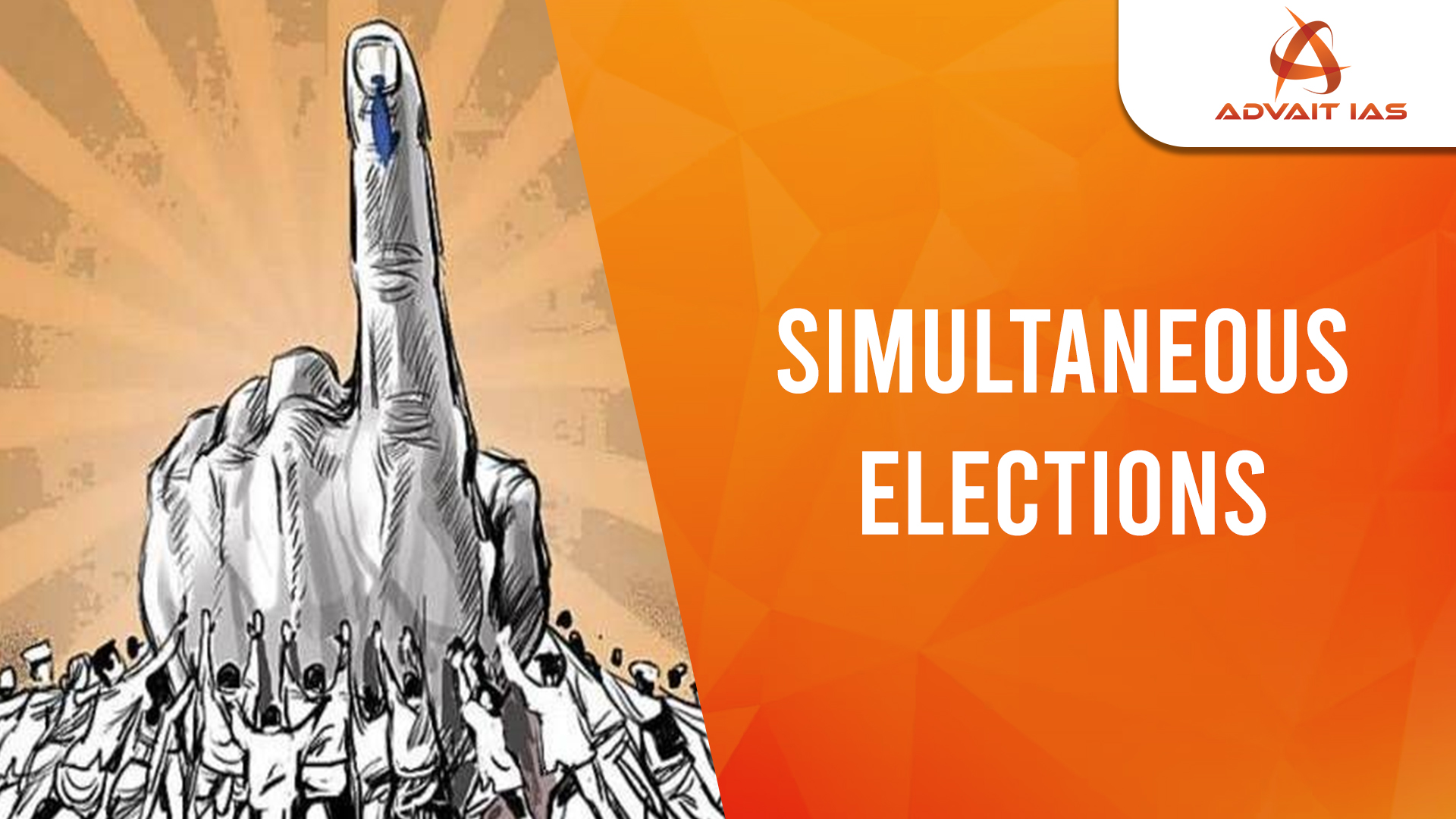Union Cabinet gives approval for Bills on simultaneous polls
Simultaneous Elections in India:
- Definition: Refers to holding Lok Sabha (parliamentary) and State legislative assembly elections together to reduce election frequency and associated costs.
- Election Commission Recommendation (1983): Suggested evolving a system for simultaneous elections.
- Law Commission (170th Report – 1999): Advocated returning to the practice of simultaneous elections for Lok Sabha and Vidhan Sabha.
- Parliamentary Standing Committee (79th Report – 2015): Supported the idea, reiterated by NITI Aayog in 2017.
- High-Level Committee (2024):
-
- Led by former President Ram Nath Kovind.
- Proposed two phases: Lok Sabha and State Assembly elections first, followed by municipal and panchayat polls within 100 days.
- Recommendations accepted by the Union Cabinet on September 18, 2024.
Key Recommendations of the Committee on Simultaneous Elections (Ram Nath Kovind Committee)
- Constitutional Amendments:
-
- Two bills proposed for enabling simultaneous elections:
- Bill 1: Lok Sabha and State Assembly elections to be held simultaneously (no state ratification needed).
- Bill 2: Synchronization of municipal and panchayat elections within 100 days of Lok Sabha and Assembly elections (requires ratification by at least half the states).
- Two bills proposed for enabling simultaneous elections:
- New Articles:
-
- Article 82A: Establishes the process for simultaneous elections for Lok Sabha and State Assemblies.
- Article 324A: Empowers Parliament to legislate synchronizing local body elections with Lok Sabha and State Assemblies.
- Amendments to Articles 83(4) and 172(4): Unexpired term provisions for replacing Lok Sabha or Assembly in case of premature dissolution.
- Expanded Powers:
-
- Expand Parliament’s authority under Article 327 to include conducting simultaneous elections.
- Electoral Roll and IDs:
-
- A single electoral roll and ID for all three tiers of elections (Lok Sabha, Assemblies, and local bodies) to be prepared by the Election Commission of India (ECI) in consultation with State Election Commissions (SECs).
- Requires constitutional amendments to shift power over electoral rolls from SECs to ECI.
- Hung Assembly or Premature Dissolution:
-
- Fresh elections to be conducted for the unexpired term of the dissolved Lok Sabha or Assembly.
- Logistical Preparedness:
-
- Advance planning for deployment of manpower, security forces, and election infrastructure (EVMs/VVPATs) by ECI in consultation with SECs.
- Synchronisation Process:
-
- Appointed Date: President to issue notification marking the start of a synchronized electoral cycle.
- State Assemblies elected after this date to align their terms with the Lok Sabha, even if it shortens or extends their five-year term.
- Example: Terms of assemblies like West Bengal (2026) and Karnataka (2028) to align with the Lok Sabha’s term ending in 2029.
In Favour of One Nation One Election
- Cost Reduction: Decreases the huge expenditure incurred in conducting frequent elections.
- Governance Continuity: Prevents frequent enforcement of the Model Code of Conduct (MCC), enabling smoother governance.
- Public Convenience: Reduces disruptions to public life caused by frequent elections.
- Efficient Resource Management: Frees up manpower deployed for extended election duties.
- Fixed Terms: Ensures Lok Sabha and Vidhan Sabha terms start and end on fixed dates.
- Focus on Governance: Eliminates constant “election mode,” allowing increased focus on development.
- Higher Voter Turnout: As per the Law Commission, simultaneous elections can boost voter participation.
- Reduced Policy Paralysis: Limits disruptions to essential services and governance.
- Administrative Efficiency: Enables consistent focus on developmental efforts.
Against One Nation One Election
- Threat to Federalism: Undermines the principle of federalism, a key constitutional feature.
- Logistical Challenges: Coordinating schedules and resources across states and the Centre is complex.
- Regional Variations: Overlooks diverse regional issues and election timelines.
- High Costs: Simultaneous elections require significant financial and manpower investment.
- Issue of Dissolution: Premature dissolution due to no-confidence votes complicates fixed timelines.
- Practical Difficulties: Managing nationwide elections poses challenges for the Election Commission.
- Political Dominance: Favors dominant national parties, potentially disadvantaging regional parties.
- Uncertain Re-elections: Questions arise on conducting re-elections in case of majority collapses in individual states.






